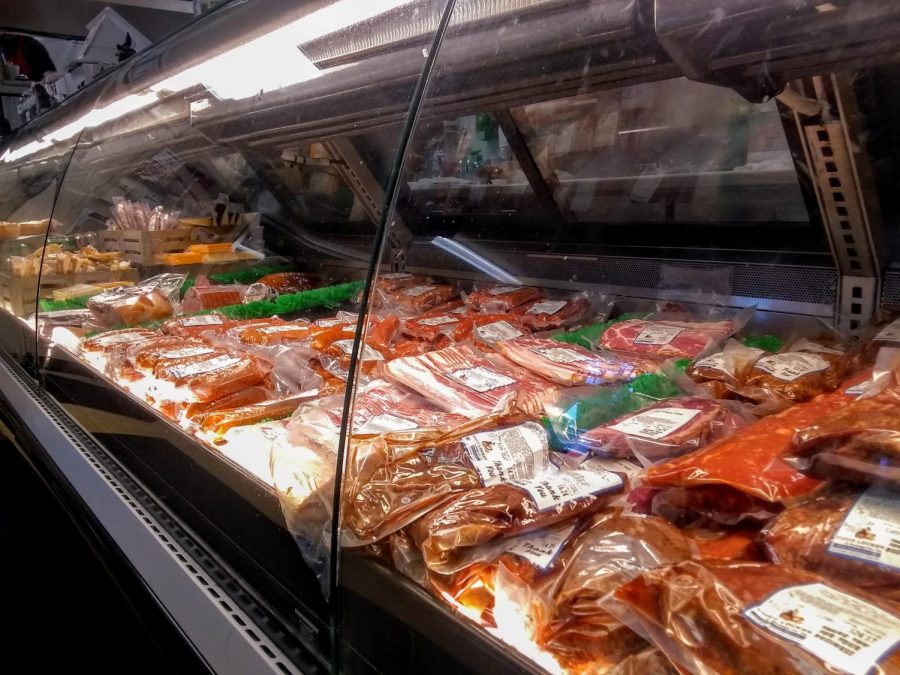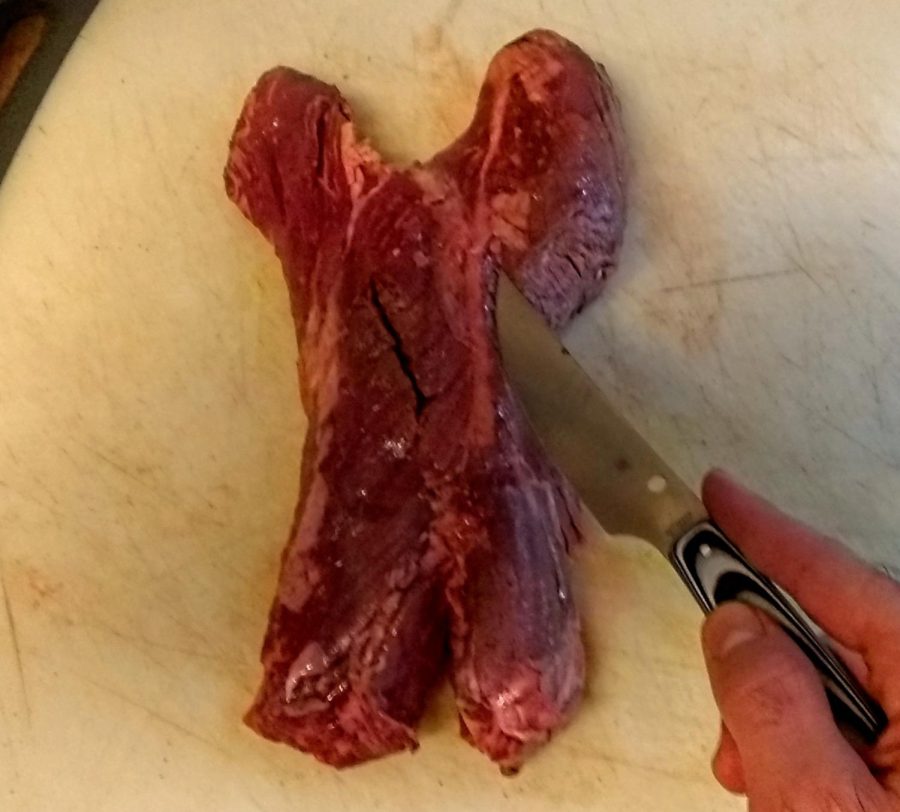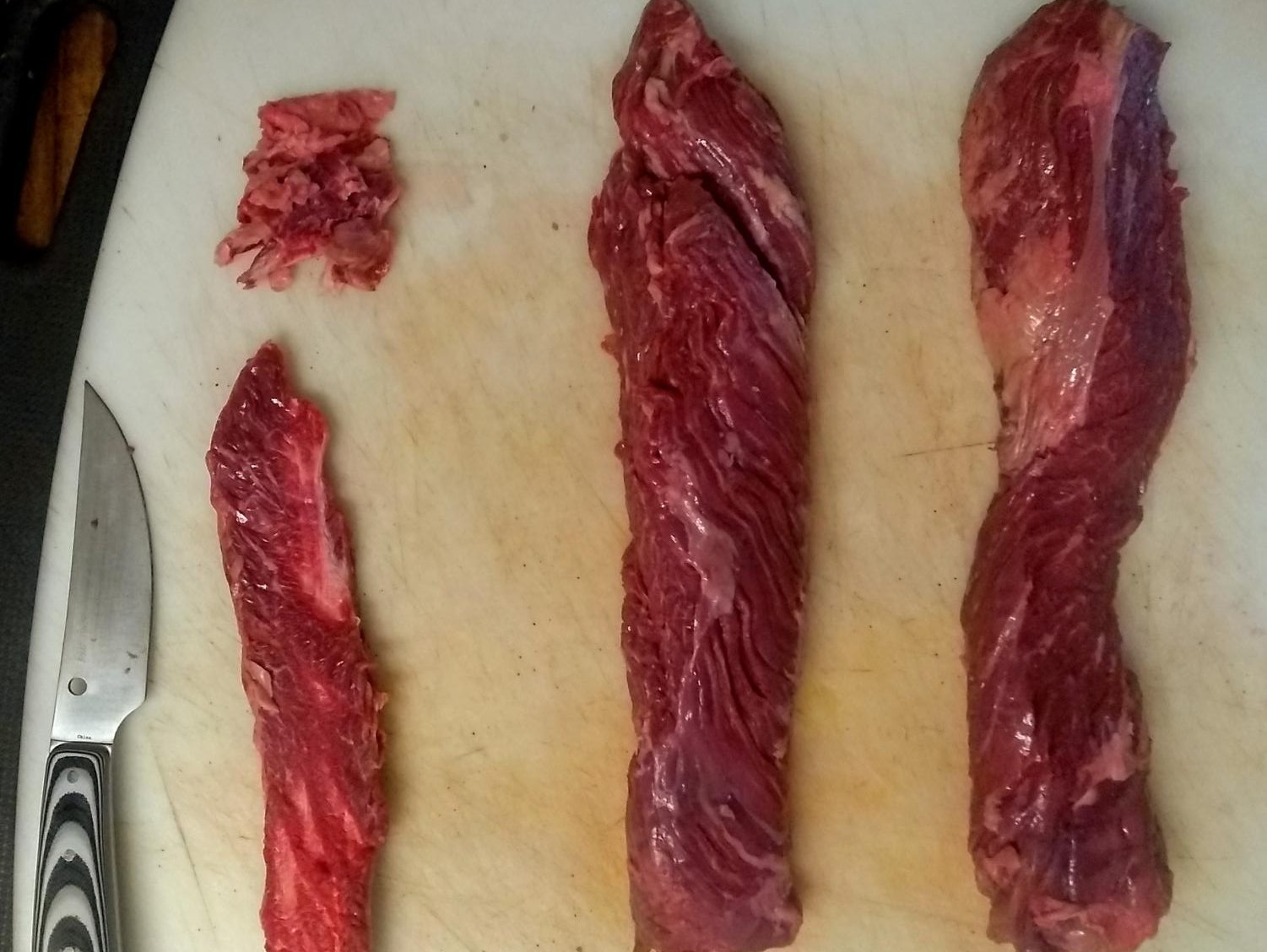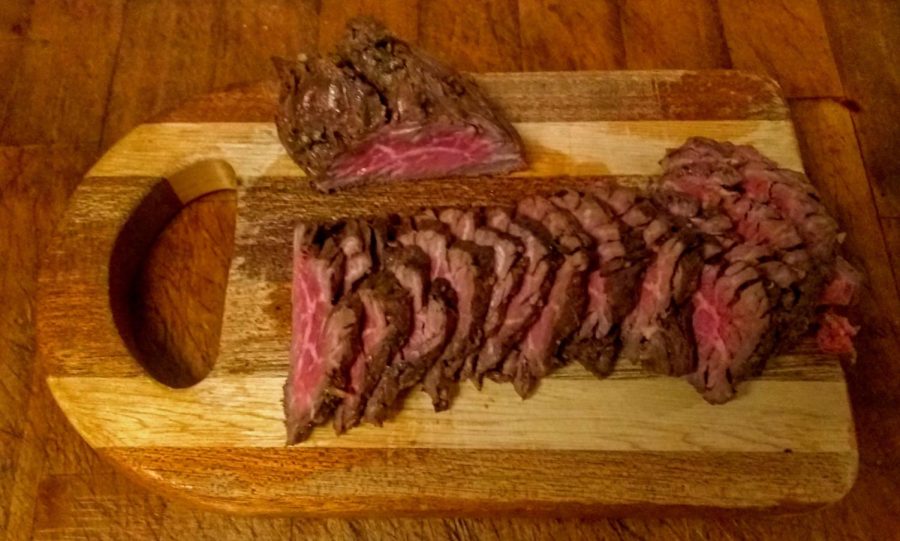For college students, food must be affordable. Help from CalFresh is undeniably beneficial, however stretching that dollar is a necessity for us. Once in a while, we need to treat ourselves. If you like savory, tender cuts of beef on a budget — consider hanger steak.
Named after its position in the animal, the hanger steak “hangs” just above the diaphragm. This allows it to be worked as air is drawn into the lungs, but not to the extent it gets tough like the back or hind quarters. The result is a cut perfect for marinades because of its loose fibers or just as is on a grill or in a pan.
First, sourcing hanger steak can be tricky. Since there’s only one per animal, they’re scarcer than ribs or loins. However, I’ve never had trouble sourcing from Chico Locker & Sausage Co. at 196 E. 14th St., Chico. They seem to always have this cut in stock, both marinated and naked. In fact, the selection they offer in general is impressive.

Prepping a hanger steak can seem intimidating, but with a sharp knife and some basic skills, I’m confident that even the most novice cook will make short work of the trimming process.
Typically, a hanger steak will come as essentially two long steaks connected by a tough, fibrous tissue. Spread out on a cutting board, it’s easy to identify both that tissue and how it “runs.”

Using the sharpest knife you own, use shallow cuts to coax out this tissue. You’ll now be left with two cuts of steak, one slightly larger than the other.

YouTube cook Malcom Reed, who runs How To BBQ Right, offers accurate and detailed insight below into how this butchering is done, and explains a simple way to grill hanger steak.
A grill heated to approximately 525F – 550F will facilitate about an eight-minute cook time, depending on the thickness of the cut, covered and on direct heat. The steaks should be rotated on all sides every two minutes to achieve an even, thorough cook.
The ideal internal temperature should reach between 122F – 125F for medium-rare; this is not a steak to overcook.
After reaching this temperature, the steaks must rest for roughly 10 minutes to lock in their juices. Cutting into them before they’ve had a chance to rest will force the juices out, leaving you with a dry steak.
A more in-depth discussion of this steak is discussed by Adam Ragusea, a YouTuber whose channel I cannot recommend enough. At the 10:20 mark, Ragusea discusses sourcing, alternative butchering and tips on how to cook hanger steak on the range below.
For seasoning, I recommend the basic olive oil, salt and pepper to get started. This allows for two things: Tasting this cut bare to get an idea of how you personally want it to compliment side dishes in the future, and illuminating you as to how simply achieving an amazing flavor can be before you try anything fancier.
In all, hanger steak is a sleeper – ribeye, T-bone and fillet minion are overwhelmingly popular and their prices reflect this. At $8.99 per pound, and considering a two-pound cut serves about six people, it’s a bargain on which you shouldn’t hang around.
Ian Hilton can be reached at orionmanagingeditor@gmail.com






